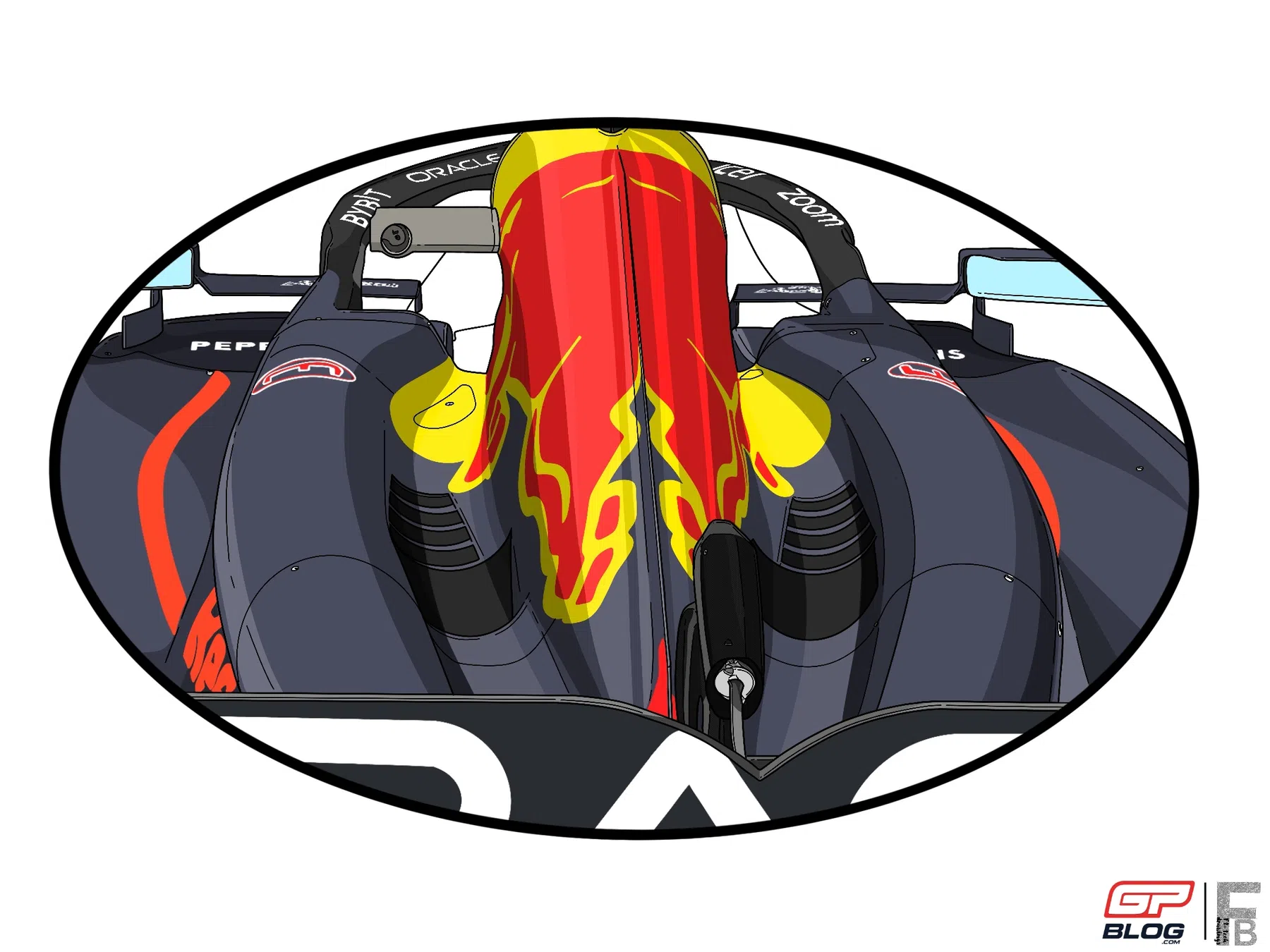Technical Analysis | The SECRETS behind Red Bull's tyre management
Tech

The first race of the 2024 season has been won once again by Max Verstappen, who started this season just where he left off at the end of 2023. The Dutch driver was able to keep a pace unattainable for all the other drivers behind, including his teammate Sergio Perez. But what's the real secret behind this perfect tyre management?
Max Verstappen and Sergio Perez had full control of the race, setting their own pace without having real opponents throughout the Grand Prix. The RB20 proved very competitive on every compound, allowing the two drivers to complete two-thirds of the race on the C3, the softest compound, without worrying about tyre degradation.
This was made possible by the high level of downforce generated, and especially the mechanical system of the car. Comparing the qualifying data showed that Ferrari and Red Bull generated about the same amount of downforce, as the speed in high-downforce corners (turns 5 and 6) was very similar. However, the secret behind Red Bull's great tyre management mainly lies in the mechanics of the car: the suspensions are kept soft enough to ensure that the tyres enter the right operating window very quickly, but being stiff enough to keep the aerodynamic platform stable and run the car at a very low ride height.
This generates high downforce from the Venturi channels. The advantage is that, although the suspension system is set to increase the contact surface between rubber and asphalt to speed up tyre warm up, the RB20 does not show any type of bouncing or porpoising, a proof that the fine-tuning, both on a mechanical and aerodynamic level, is very strong.
Despite this advantage, it wasn't a smooth weekend for Red Bull. On Friday, the RB20 struggled slightly over the single lap, then came back to express their full potential in the race pace simulations. During FP1, Verstappen and Perez complained multiple times that the balance was bad and the car was sliding a lot in all traction zones. During FP2, despite having a lower engine configuration, the Dutch champion only secured P6 in the qualifying simulation, making opponents believe he was vulnerable. However, this aspect might also be related to the new concept adopted on the RB20, which still needs to be fully understood and fine-tuned both in qualifying and in the race.
The new car built by Adrian Newey's team presents some different solutions compared to the previous RB19. The strong points have been maintained, such as the high downforce generated, the excellent tyre management, and the high top speed, but the team has tried to improve the weak points, like the car's behaviour on kerbs and in low-speed sections. To achieve this goal, they adopted solutions from other teams, such as the Mercedes-inspired gulleys or the vertical cooling inlet inspired by the by-pass duct of the SF-23 and adapted them to their car concept. 

This set of solutions make the RB20 a car capable of having an excellent aero-mechanical platform in all types of corners, both tight harpins and high-downforce corners, together with a lot of “efficient load” (downforce generated via the Venturi channels, which has a low impact on the overall drag of the car). This perfect interaction between the mechanics and aerodynamics of the car makes it extremely balanced, especially in the race simulation, as both Perez and Verstappen were able to bring the tyres into the right operating window with a "slow" first lap to then set a pace unmatchable for everyone else.
During the post-race interview with David Coulthard, Verstappen praised the RB20's ability to perform on every compound during the race: "Unbelievable. I think today went even better than expected. I think the car was really nice to drive on every compound."
This great advantage over the race distance, especially in Verstappen's hands, was matched with a smaller margin in the qualifying runs on Saturday: during qualifying, both the RB20 and the SF-24 seemed very close in performance. On the one hand, Red Bull was very fast in the first sector, proving that the drivers could fire up the tyres quickly, but then struggled a little bit in the third sector, where Ferrari excelled.
“It was a little bit unexpected but luckily […] the car came to us and I felt a bit happier with the whole car," Verstappen pointed out in the usual post qualifying interview. His words prove that Red Bull is stronger and more confident of their superiority over the race distance. At the same time, in qualifying, there would be nothing to be surprised about if some other team managed to get pole position.

